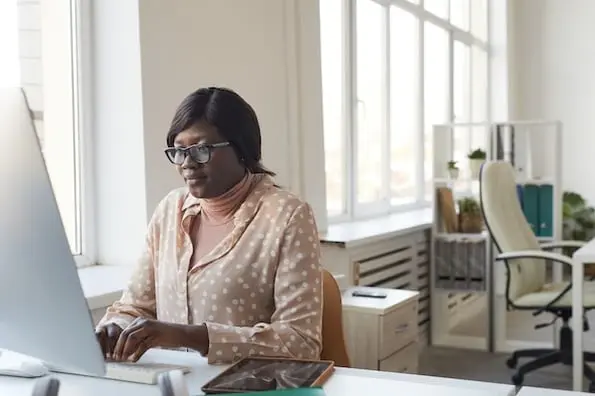I put this article together, starting with the web design skills I most appreciate when working with or hiring a designer. I spoke to many designers who provided insightful thoughts and tips, and then I reached out to Matthew Attalah for the perspective of a senior designer who I’ve worked with. He’s the founder and lead designer of Step Labs and works on design for multi-million brand companies. I’ve worked with him for years, and I admire his work. I can’t wait to share his insights with you here.
Table of Contents
Essential Web Design Skills
This next section details the 13 essential web design skills based on my experience working with designers and recommendations from the best designers I know.
I’ve included a range of skills, including technical web design skills and the all-important soft skills.
An early tip for reading this article: Don’t discount the soft skills, which are less intrinsically related to design and more about working with clients and managing design projects and processes. Talking with design experts made it clear that soft skills make great designers successful.
Okay, with that in mind, let’s get into the first tip.
1. Active Interest in Design Trends
Design is not an exact science, nor is it static. Design trends come and go, so if you want to be a great designer, you must stay on top of what’s trending.
In my experience working in digital marketing, which changes a lot, this is a labor of love. You need to truly love what you do to find the time to keep in the know about what’s going on in the industry and how things are changing.
To take this to the extreme, does anyone remember hit counters and guestbooks on websites? They were on every website in the late nineties and early nineties.

Naturally, a designer working on a modern website in this era is not going to recommend a hit counter, but the point is that design trends change, and if businesses want their site to keep up with the latest design trends, you must know what’s going on so you can steer them in the right direction.
Also, it’s good to know what’s truly an outdated design trend and what’s making a comeback! A great example of this is GIFs. A GIF on a website isn’t necessarily a trigger for a redesign right now, but it might have been 10 years ago.
Pro tip: HubSpot regularly updates its content, and this article on website design trends will keep you in the know about what’s happening in the design world.
2. Inspiration Gathering
Inspiration gathering leads nicely from design trends. Matthew Attalah, my trusted design pro, put this on my radar.
He says, “The efficiency of a designer is determined by how effective their inspiration-gathering methodology is. You want to have a clear-cut series of steps that allow you to consistently gather useful examples or tidbits of other websites in a niche or sector that light up your imagination.”
“You can also build your system into a series of replicable steps regardless of what the niche or sector is that the client or website you are designing operates in.”
I fully agree with Attalah here (you might hear me say that a lot in this article.)
I work with many B2B sites on WordPress, and there are design modules or landing page design elements and user expectations that are the same site-in-and-site-out.
A designer's job is knowing exactly when to follow the crowd (with some bespoke touches, of course!) and when to design something completely new. For elements that just work, as Attalah says, you can gather inspiration and create a process.
Pro tip from Matthew Attalah: “You can gather inspiration from sites like Awwwards, Dribbble, and Behance, as well as more niche or section-based sites like Footer Design.”
Below is a screenshot taken from Awwwards’ website. It’s a collection of pastel colors. Here, you can find beautifully designed websites in pastel colors to inspire your next project.
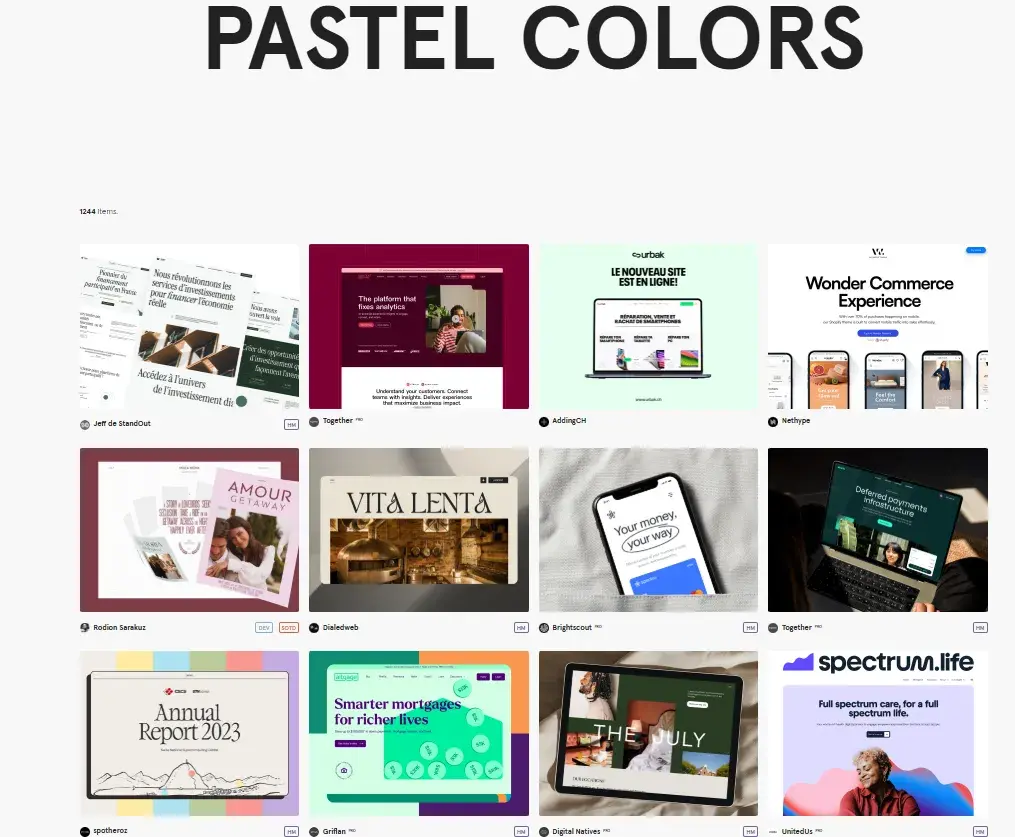
3. Technical Skills in Figma
I was really pleased when Attalah brought technical skills in Figma into this article.
I am a huge fan of Figma and its functionality for design teams and clients. Some of the functionality in Figma, such as the comments, allows for easy digital communication. I like how I can add a comment exactly where I see a revision, and the designer I’m working with can easily respond and build context for what I’m asking for.
By the way, we dig into communication in great detail later in this article.
On the technical web design skills in Figma, Attalah warns, “This is one you can’t really get away from. In my opinion, this is the skill that holds back extremely creative individuals from being exceptional web designers.”
Attalah continues, saying, “In a sense, your ability to visually communicate with a developer is handicapped to your level of technical ability in Figma. Don’t be a selfish designer who fails to use components, variables, or even auto-layout. This makes the life of your developer much harder and also reduces your efficiency in Figma.”
Pro tip from Matthew Attalah: “There are great bootcamps such as Figma Academy 2.0, the course I initially took when I was looking to upgrade my skill set in Figma.”
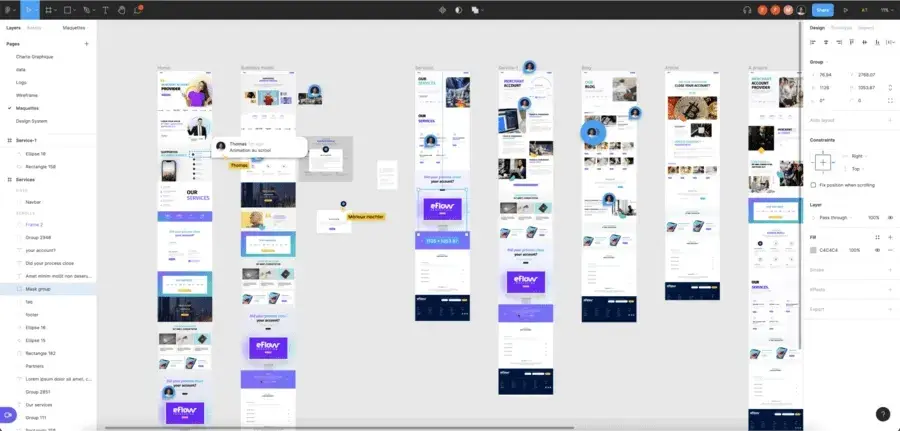
4. Managing Handovers
I know I’ve jumped a fair bit here, from inspiration gathering, design trends, and Figma to handovers, but there’s a lot of crossover here in how Attalah uses Figma to work with developers, so it felt right to address this here.
Once the web design is complete, the designer hands the project to a website developer. The developer will take the creative design and build it so the world can enjoy it.
Here, we uncover another essential design skill: managing the handover.
I could have added this to “Communication” later, but since every website design project needs an effective handover, I felt it deserved its own section.
Plus, Attalah had some specific tips for this particular area of the design process. Attalah admits, "As a web designer, you are at the mercy of the web developer you are working with.”
Issues arise after the site or page is live. Attalah says it’s common to hear web designers “complain that the final product doesn’t reflect their design. They seek to pin all blame on the developer for this.”
Instead, Attalah recommends first examining the handover process. He says, “Often when looking deeper, I see that [the designer] failed to produce an effective handover.”
I know this to be true. When I worked as a digital project manager, there were instances where I was responsible for communicating design nuances to developers. The page was built, and on reflection, it wasn’t what I asked for. But, when I reviewed my notes, I could see that the fault was with me. The handover wasn’t clear, or maybe it was just subjective, and their interpretation wasn’t quite my intention.
Don’t worry, Attalah isn’t leaving us without some tips for this essential design skill. To manage the process, Attalah recommends asking the following questions:
- Have you left sufficient comments and details when handing a Figma file over to a developer?
- Have you created a comfortable environment where they can ask for adjustments to the design, or do they feel like they will be shouted down for suggesting any adjustments?
Attalah says, “There is a lot more accountability for sub-par projects that designers can take, and the best designers seek to take accountability for lapses in communication with developers.”
I loved the entire approach here. When teams work collaboratively, everyone must be open to their role in project success. In fact, there are almost two essential skills mentioned in this section:
- The skill of managing a handover.
- The skill of taking accountability. And this means leaving your ego at the door.
5. User Experience (UX)
I’d go as far as to say that you can’t be a great web designer without an awareness of user experience (UX). After all, the point of design is to create something visually appealing and functional for the user.
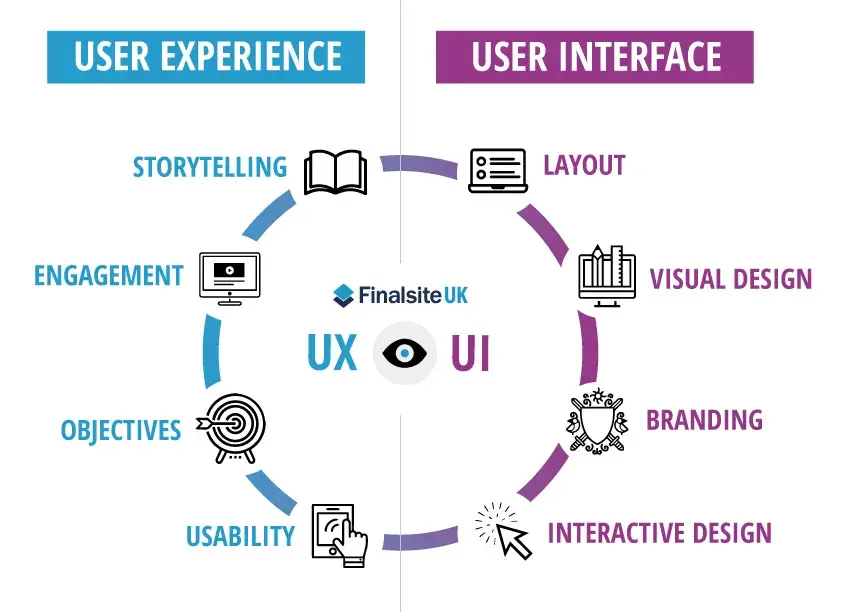
Great web design captivates web visitors and helps them easily navigate a website.
When it comes to UX, the most skilled designers consider principles like accessibility, clarity, responsiveness, and simplicity to ensure a website works well for everyone.
In the tips below, I’ve added more on typography and accessibility skills and touched on responsiveness.
Pro tip: HubSpot’s UX templates are a great starting point for any designer. They’re completely free and will help you go beyond the technical design skills, as the templates include a:
- User testing template.
- Testing report template so you can summarize processes and result.
- UX research presentation template to share your findings.
6. Collaboration
Collaboration is key in website design. It’s a soft skill (not a hard skill). Hard skills are your technical ability. They’re more task-specific and tangible, like something you would learn in a website design course.
Soft skills, on the other hand, are interpersonal and emotional intelligence abilities. They’re highly important and are foundational to relationship building. I think of soft skills more as attributes and personality, but you can develop your soft skills!
I believe collaboration is key to success in any role, but it will certainly help website designers succeed.
I work in SEO, so I’m often building new pages and working with designers to create a page that:
- Looks amazing.
- Function for SEO.
For designers and SEO, there are often compromises to be made. Collaborative designers might have to compromise on certain design elements. For example, it can be tempting to use tabs and accordions within the design because they improve website usability, look neat and tidy, and reduce page length.
However, putting content written to rank within accordion deprioritizes the content, reduces the chance of its ranking, and hinders SEO efforts.
In this case, design and SEO need to collaborate, and both parties likely need to compromise and develop a solution that works for both.
7. Client Management
If you’re a web designer who wants to work freelance or maybe even start your own website agency, you absolutely have to have the skills to manage clients.
This doesn’t come naturally to everyone but is of utmost importance.
By the way, there’s a course below geared up to teach designers how to freelance.
I’ve hired website designers, and I believe the best hires take creative license but communicate their creative ideas before they design. They hear clients' wants but know how to give them what they need.
As I’ve alluded to in this article, I lack design skills. I’m not a very visual person, but sometimes, my job requires me to consider design for my clients, landing pages, or my site.
I’ve hired designers who have given me exactly what I asked for without question, but I don’t anticipate my design skills being remotely good.
What I really need is someone to hear me, understand what I'm asking (and why), and then work with me on the brief so we can design something that works with best practices, like UX and target audiences, considered.
As you can probably tell, I've experienced this client management or communication issue multiple times, and I fully accept that I am a big part of the problem! For this reason, I was desperate to uncover the design side of this issue.
I came across Martin Agubata's Medium article How to Handle Difficult Clients as a Designer. Since the article didn’t cover this particular issue, I messaged Agubata to gather more of his amazing insights into client management as a soft skill in web design.
Here’s what Agubata, a product designer, said: “It’s the designer‘s job to understand the client’s needs through a series of questioning and interviews. A great designer is a psychologist in a way, and an expert in a specific design field like web design.”
Of course, as a self-confessed difficult client for designers (sorry to the lovely designers I’ve worked with), I was very appeased by Agubata’s statement that it’s the designer’s job to understand the client. However, I want to add that a designer can only work with a client if the client is willing to listen, leave their ego at the door, respect the designer's skills, and work with them (not against them).
Next, I wanted to know how Agubata advised designers to have the courage to alter a client's brief for the greater good of the design.
“If there’s a significant need for adjustment, the designer should communicate with the stakeholders. They must present their idea clearly and explain how it adds value to the company or client. If the client declines, it’s best to deliver what’s required, as the ultimate goal is to strike a balance.
“A great designer creates harmony between the users and the product. It’s never about the designer but the people they’re designing for and collaborating with. I would ask a lot of ‘why’ questions if an idea doesn’t sit well with me. That way, I can better understand where the client is coming from.”
I really liked Agubata's approach. Hearing his insights will alter how I work with designers. Sometimes, I’ve worked with junior designers, and as a senior marketer, I feel I could guide us to design success by meeting with them, running through my brief, chatting with them about the why, and asking if certain things could be improved. This way, we could collaborate and create something great.
As a designer, never be afraid to set up this kind of meeting so you can fully understand the why, the client, and the goals. Then, work with your client or team member to design greatness!
8. Communication
Closely linked to collaboration is communication; you simply can’t collaborate without it.
Matthew Attalah described this skill as “absolutely critical,” and I agree.
He provides something of an analogy: “Two designers can have the same technical skills but be differentiated in the eyes of a client based on their communication skills.”
As someone who hires web designers, I need someone I can talk to. I love design because it’s a skill I lack, so hearing the rationale, the why, and sometimes having a gentle push in the right direction is exactly what makes a highly skilled web designer stand out.
Attalah continues, “Whether you are interpreting design briefs from an account manager or from the client themselves, your ability to understand the needs of users, the goals of the client you are working with and coalesce these data points into a cohesive design is largely determined by your ability to communicate.”
This very much aligns with Martin Agubata's comments: You have to communicate and manage your client.
When asked about a tip for demonstrating these essential web design skills, Attalah provides two key ways that communication skills are key in web design:
- Asking the right questions and listening effectively to truly grasp a project's aim and then subsequently deliver on those insights.
- Be an effective communicator when presenting your design so that your vision isn’t exclusively diluted and determined by the clients themselves — remember, you are the expert!
I have to agree again about effective communication when presenting designs. I used to project manage website designs, and website design presentation meetings can be nerve-racking because the success of the project hinges heavily on how well designs are received and how well they’re communicated.
From experience, it was crucial that the lead designer could competently and assertively share why design decisions were made and support their claims. Bringing in metrics or case studies that prove what you’re saying is not a bad idea, as it provides the client with a layer of security. Working this way will increase your chances of clients buying into your designs.
9. Conversion Rate Optimization
Conversion rate optimization (CRO) is what Matthew Attalah excels at. For a mutual client, Attalah and the Step Labs team improved conversion rate by 215% and revenue from 100K - 1.2m/month.
Attalah describes mastering the web design skill of conversion rate optimization a “key growth zone” when he scaled his agency, Step Labs.
He says, “Understanding that we can deliver more value to businesses than pure aesthetics and that the tighter we understand their goals, the more value we can provide from an ROI standpoint through design.”
Although a good web design is essential, a senior website designer understands the components that take a website from looking good to being highly functional. This is critical because buyers who hold the keys to budget make decisions to invest in design based on what it can bring (in terms of cash) to a business.
Attalah tells me more about CRO. He says, “What I mean by awareness of CRO is having a solid grasp of the difference between purely aesthetic design and conversion focussed design.
As designers, it can be tough to avoid wanting to make everything as beautiful as possible. If you can marry aesthetics with goal-oriented design, whether to increase average order value (AOV), lifetime value (LTV), or simply conversion rate (CVR), you move yourself into another tier as a designer!”
Below is a screenshot from HubSpot’s Optimizing B2B Conversion Rate article. You can see that some of these steps are managed in part, or fully, by design.
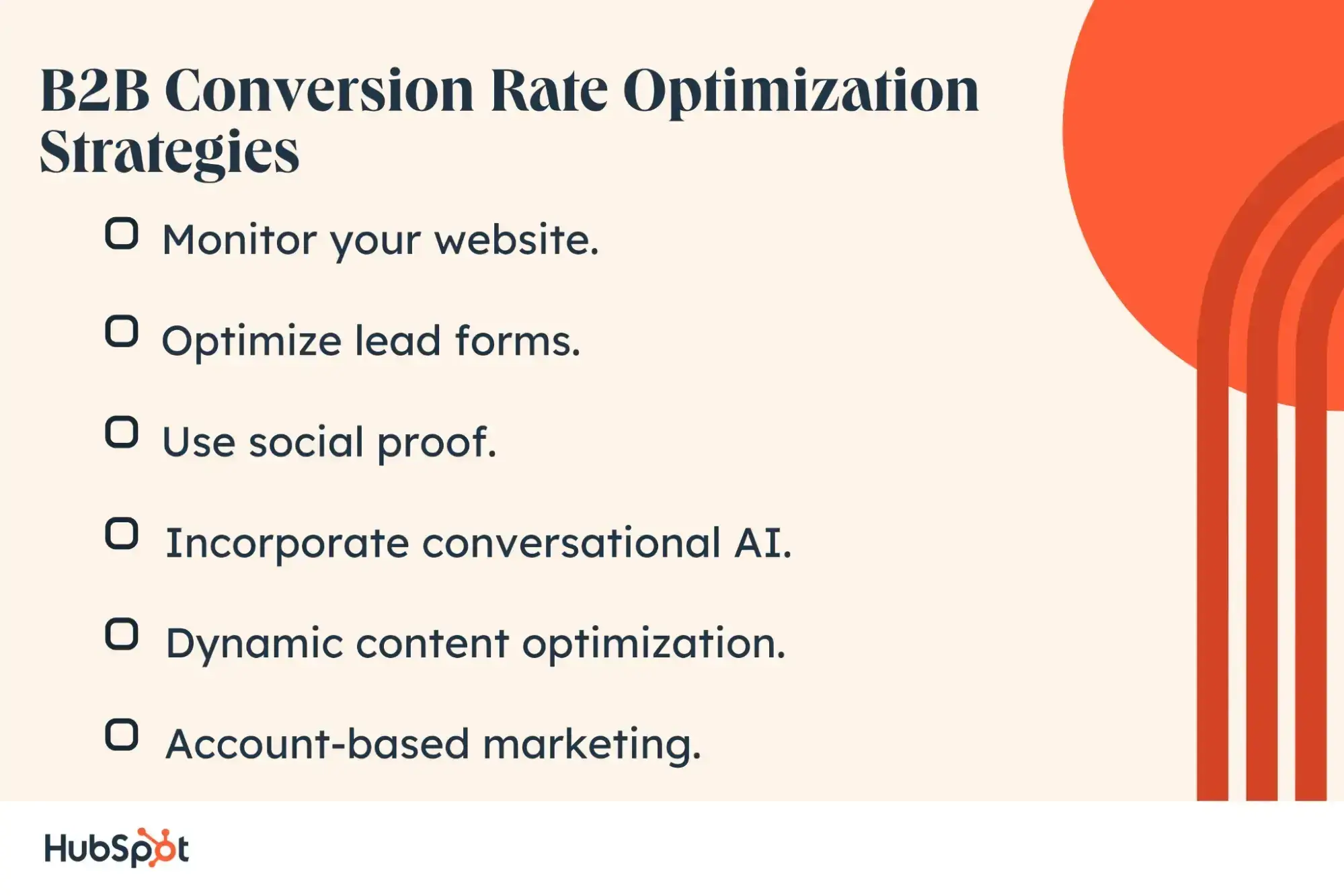
10. Design Foundations
This one seems obvious, but it deserves a place in this article as an essential web design skill. You simply won’t get anywhere without knowing the foundations of great design.
On this, Attalah says, “It is critical that your foundational design skills across the fields of color theory, typography, and accessibility are nailed down.”
“These foundations can always be sharpened, and I encourage all designers to retain humility with regard to the ‘basics.’”
I really loved Attalah’s approach here. I especially like what he says about retaining humility, and yes, you guessed it, I could not agree more with this sentiment. This is as true for design as it is for marketing more generally. It is easy to do well in your career and begin to neglect – or simply forget – the basics. It doesn’t hurt to revisit the basics from time to time, either.
Pro tip from Matthew Attalah: “One great place to work on design basics is uxcel.com. As designers progress in their careers, they can often neglect to top up these skills learned as juniors or at university. This is quite limiting.”
11. Typography and Branding
For designers, typography goes beyond fonts and the art of arranging letters. The right typeface is a powerful signal about a brand's personality, values, and emotions.
The art of typography means understanding the relationship between a brand and its typography and creating designs with the right typeface that resonates with the target audience.
I wrote the article on pink website designs with examples for HubSpot, and I spoke to Amber Miller, founder and brand expert at Oohlala Studio. Her comments about website typography have always stood out to me. Her words were so poignant that when I researched typography and branding for this article, my mind went straight to her.
Here’s a recap of what Miller said: “Serif typefaces come in a range of serious and traditional to more modern and contemporary, the traditional sets (think Baskerville, Bodoni, Didot).”
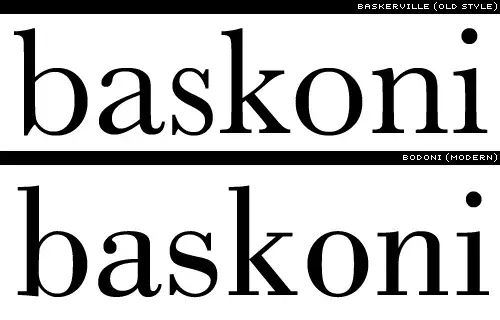
Miller continued to discuss sans-serif typefaces and taught me about their weightings and how they impact branding.
Miller says, “Sans-serif typefaces, weight, and geometry play a big role in their perception. Bold and thick sans-serif fonts will make the pink appear more vibrant and intense — these weights work great for sports brands or brands looking to create high impact or portray high energy,” Miller says.
“Thin and delicate will have the opposite effect, making it more dainty and subdued. A sans-serif that is more angular and geometric can make it look more bold, edgy, and forward-thinking.”
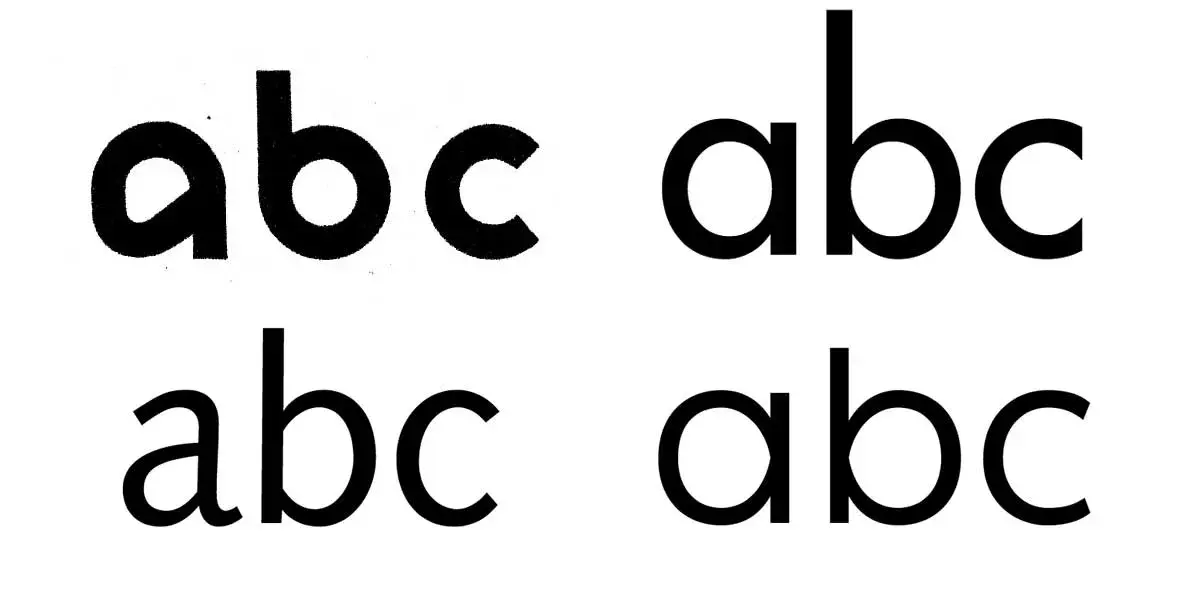
As you can see, website typography is a whole skill in itself.
Pro tip: If you want to develop your typography web design skills, then take a look at this article, The Beginner's Guide to Typography in Web Design.
12. Accessibility and WCAG Awareness
Web design is part of the digital marketing ecosystem, and design has a significant role in website accessibility.
Stewart Law is a former WordPress developer and the technical SEO at forank. He works closely with web designers to resolve website accessibility issues that impact a site’s usability and accessibility.
According to Law, common website accessibility issues involving web design include:
- Navigation issues prevent users from accessing pages on a website. Websites need clear and intuitive menus to offer seamless user experiences, particularly for users relying on screen readers.
- Contrast and readability are common web design issues that even the most skilled designers overlook. It’s important to use color schemes that meet WCAG (Web Content Accessibility Guidelines) standards.
- Responsive design ensures websites work flawlessly across all devices, from desktops to smartphones. In Law’s experience, responsive design is the component of web design that causes issues with text being too small. Law reports seeing “text too small” flagging as an issue. It means that some – maybe even all – visitors will have a hard time reading the text on your site.
Important note: These technical web design skills are not just web designer issues. Resolving issues such as those listed above generally comes from collaborative marketing teams. Designers can’t be expected to know everything about requirements for websites. Not only that, but what’s required to meet standards does change. This is why Law, a technical SEO and WordPress developer, works with the designer; it’s a team effort, but adding this awareness into your web design skillset can't hurt.
- If this side of design interests you, familiarize yourself with WCAG (Web Content Accessibility Guidelines) standards.
- If you want to look at your own site to see where accessibility is failing, you can do so with Google Page Insights and Google’s Lighthouse, which identifies accessibility issues so you know what to resolve.
A screenshot below shows what this looks like.
First, go to your website and click F12. This will bring up a taskbar. Navigate to “Lighthouse”. As pictured below, I’ve generated a report for accessibility only.
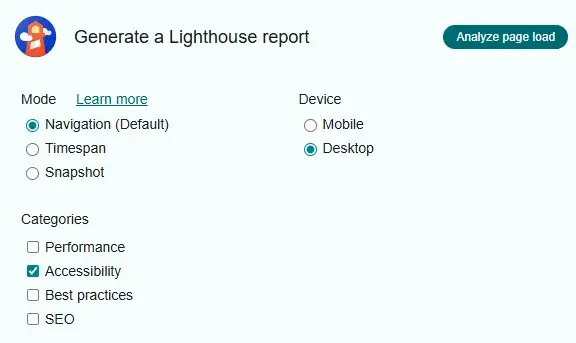
Once you hit “Analyze Page Report,” you can scroll through a list of items, many of which will be related to design.
Pictured below is the contrast issue that Law reports seeing a lot. On the site where I ran the report, there are contrast issues on both background and foreground colors and links.
A designer with the skills to find and identify these issues could solve the contrast issue.
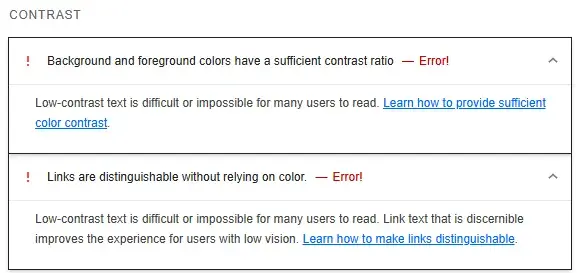
This is perhaps an area considered more of a technical web design skill, but I wanted to take the tip as technical as possible to demonstrate how far you can take web design skills. There’s a lot in between, so don’t get overwhelmed. No one is expected to know it all overnight.
Pro tip: HubSpot has a guideline for exceptional website design and usability covering everything from CTAs (which helps conversion) to brand and typography. You could use this guideline as the foundation of your design checklist.
13. Reliability
Before we get into the web design courses that will help you level up your design skills, reliability feels like the perfect soft skill to end on.
Attalah says, “Your ability to consistently deliver on time is a key feature that determines the success of your career in web design or simply how happy a client will be at the end of a project.”
He says that “As this is a creative domain, there can be more challenges meeting deadlines than in other fields, but you have to try to organize yourself as best as possible using a project management tool such as ClickUp or Notion.”
“If you feel you are going to miss a deadline, give the client or stakeholder a heads up and flag it as early as possible with a thorough explanation. Most people are more reasonable than you think!”
This tip is exceptional. Reliability is crucial because when someone asks you to design something for them, they need it, maybe for a campaign and to meet the deadlines set by their managers. A designer's failure to deliver is a reflection on the person who has hired and agreed to pay you; a real shame.
As Attalah says, most people are more reasonable than you think. If you are organized and give appropriate notice, many deadlines have a little flex. What you don’t want to do, though, is leave your work to the last minute. You absolutely must make efforts to be reliable.
There’s a course below that's dedicated to helping designers master this exact skill.
Pro tip: I’ve been a project manager for over ten years and wrote a blog on AI project management tools for Hubspot. I share my thoughts about ClickUp, which is what Attalah likes, and recommendations for nine other project management software so you can find one that works for you. It'll be worth a read if you’re looking to refine your reliability web design skills.
Below is a screenshot of a Gantt Chart in ClickUp. They can help visualize projects, so you know where you are at every step.
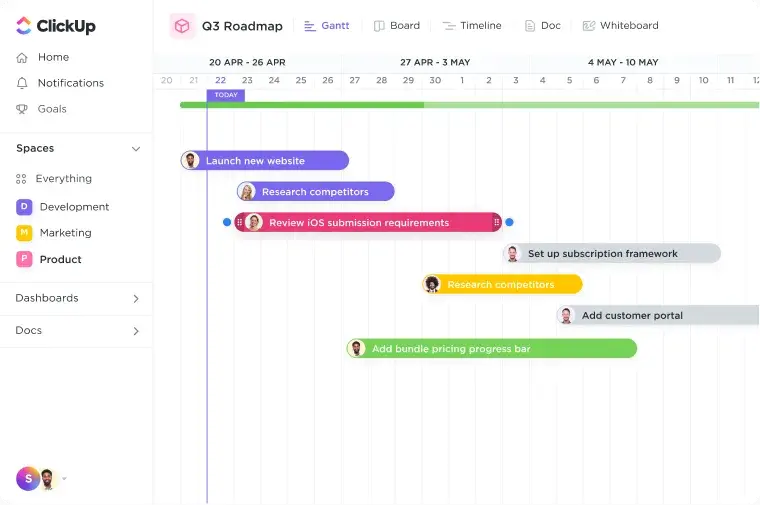
Courses to Help You Build Your Web Design Skills
Below are web design courses that you can take to develop your web design skills. I’ve tried to include a range of skills and prices.
HubSpot’s Free Design Courses
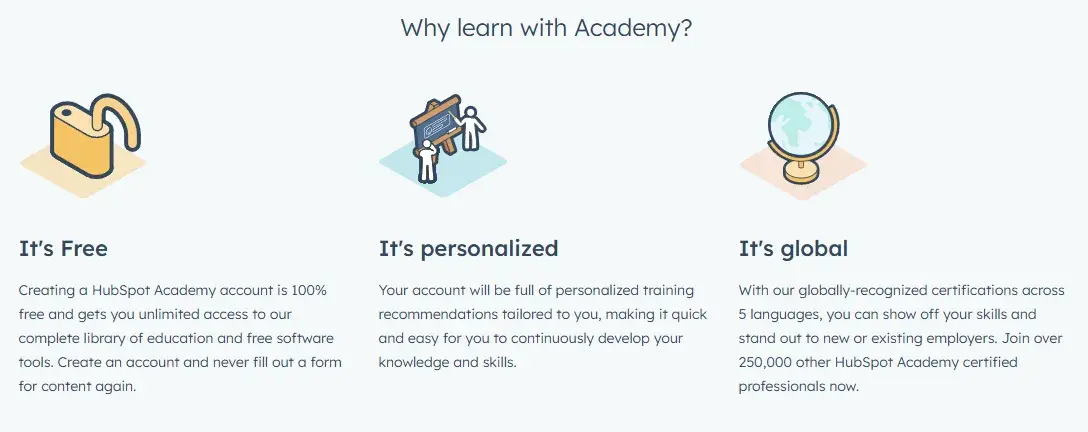
HubSpot is genuinely an incredible resource for all marketing, and web design certainly fits under that umbrella.
- There’s an extensive course list here.
- You can find website design courses here.
- And if it’s helpful, visual design courses here.
Here are some courses that I think are most ideal for website designers.
Growth-Driven Design
This free HubSpot course, Growth Driven Design is excellent if you’re working in or want to work in an agency. You’ll learn how to design in a way that delivers client KPIs.
Best for: Web designers who work in, or want to work in, an agency.
What’s included in the course:
- Web growth design knowledge.
- Templates.
- Real-world examples.
- 1 certificate so you can add it to your CV.
- 5 Lessons.
- 19 Videos.
- 14 Quizzes.
- 4 hours and 56 minutes of value!
Price: Like many of HubSpot’s amazing courses, this course is free.
Building a Website in Content Hub Starter
If you’re working with clients who use HubSpot, then this free course, Building a Website in Content Hub Starter, is for you. You will learn how to create functional (and beautiful!) websites with HubSpot’s Content Hub.
Best for: Website designers who already work within businesses that rely on HubSpot. Or, designers who want to niche and specialize in HubSpot’s software.
What’s included in the course:
- Knowledge on designing in Content Hub Starter, including creating, editing, and styling website pages without the need to code.
- Setting up and optimizing a blog.
- 4 Lessons.
- 12 Videos.
- 2 Quizzes.
- 2 Practical exercises.
- 1 hour and 8 minutes of value.
Price: Like many of HubSpot’s amazing courses, these courses are free.
Google UX Design Professional Certificate
Google’s Career Certificates are hosted on Coursera. A Google course is a pretty good way to learn how to design since Google has been the leading search engine for many years. Although there are some threats with new AI search and social media, I don’t think learning about Google is bad. It’s been the leader for a long time for a reason, and I expect Google to keep up with demand, meaning it’ll be here for a long time.
Best for: This course is a true commitment. It is a beginner course, but you’ll need to put in around ten hours per week. You can learn at your own pace. This course also comes with a price tag, but you can use it to contribute towards a degree if you want to.
What’s included in the course:
This course is a seven-course series, so it’s no small feat.
- Foundations of User Experience (UX) Design.
- Start the UX Design Process.
- Wireframes.
- UX Research and Testing.
- Create High-Fidelity Designs and Prototypes in Figma.
- Build Dynamic User Interfaces (UI) for Websites.
- Design a User Experience for Social Good & Prepare for Jobs.
- Certificate.
Price: Coursera costs $39/month. If you commit to the course, you want to be disciplined. Otherwise, it’ll take longer than it needs to and cost more money. You can try the course for seven days free of charge. If you sign up for the trial, you will be expected to add your card details, so remember to cancel.
Complete Web Design: from Figma to Webflow to Freelancing
Udemy is a great resource for any course. You can see all web design courses here. If anything, the number of courses on there is a little overwhelming, but you can refine options using the filter.
Don’t worry, I’ve helped pick out a great course there: The Complete Web Design: from Figma to Webflow to Freelancing.
Best for: Website designers who are thinking about making the leap into freelancing.
However, I don’t think this is the only person who could benefit from this course. The course goes into web design skills that are really helpful for freelancers, such as writing cover letters. Although this is freelance-specific, I feel like knowing how to talk to clients and how to “sell yourself” can only benefit those all-important web design soft skills that could make you great to work with, even if you’re employed.
What’s included in the course:
- 21.5 hours on-demand video.
- Assignments.
- 23 articles.
- 9 downloadable resources.
- Access on mobile and TV.
- Certificate of completion.
Price: Like many courses on Udemy, this one is amazing value, especially if you can find it on offer. The course is usually $129.99, but as I write this, the course is only $14.99. If you’re interested in an Udemy course, it might be worth looking for coupons, discounts, and offers.
Now it’s time to develop your web design skills.
I meant it when I said I was envious of the essential web design skills that creative folk have, yet writing this article outlining the technical and soft skills embodied by the best website designers made me appreciate the scale of skills a great designer embodies.
Web design is undoubtedly a creative and technical skill, but the greatest designers go the extra distance and showcase soft skills, work with teams, and help those around them to get the best design possible while meeting the needs of marketing and users.
I hope you enjoyed this article and were motivated to develop your web design skills through practice and the recommended courses.

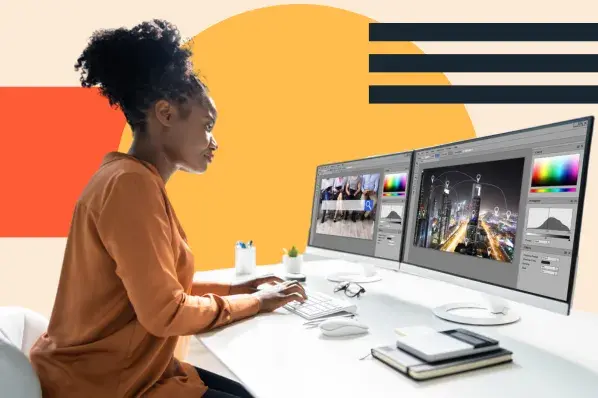
.png)




.jpg)
